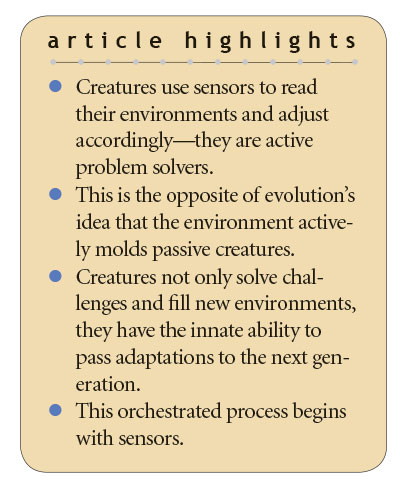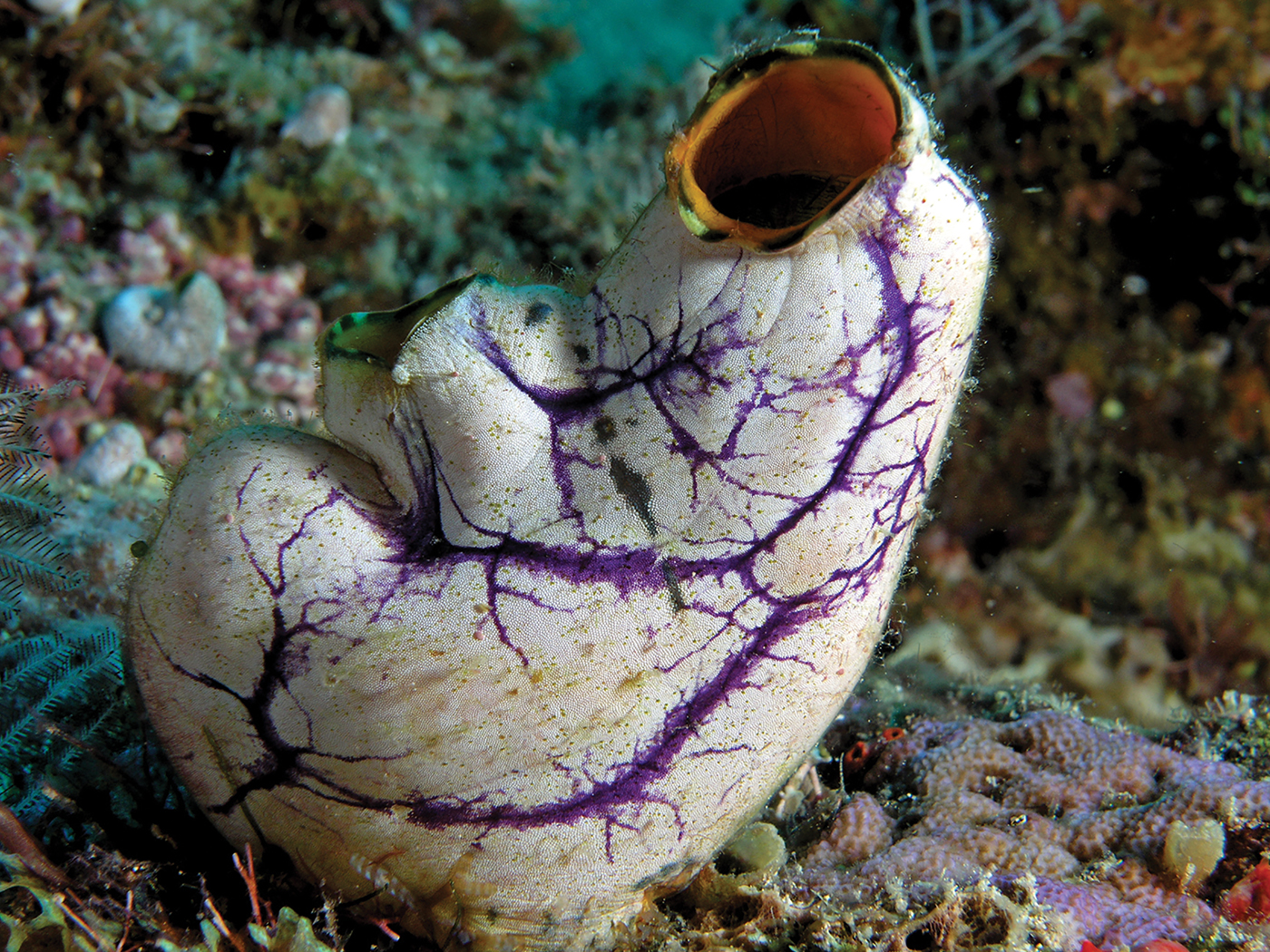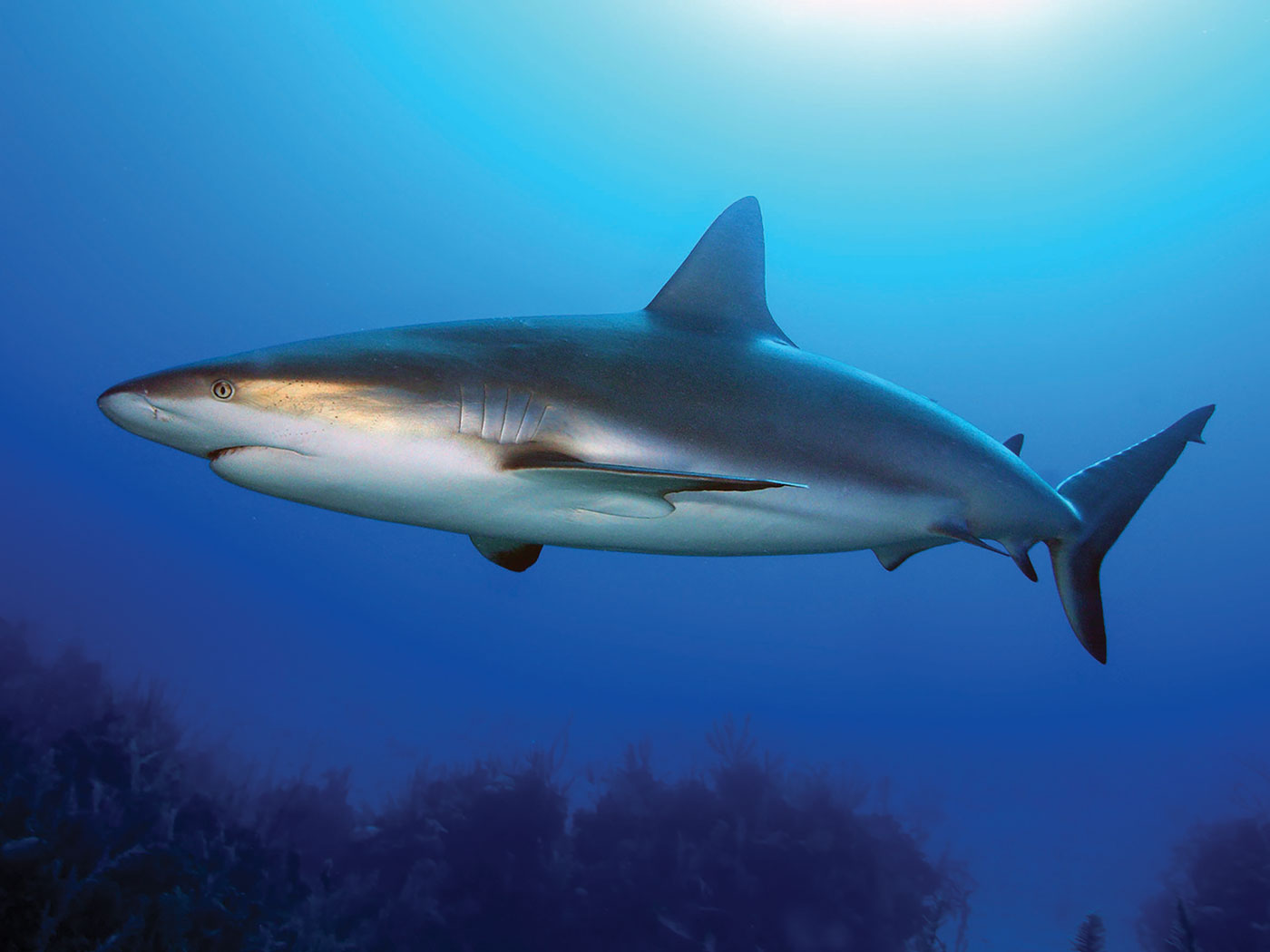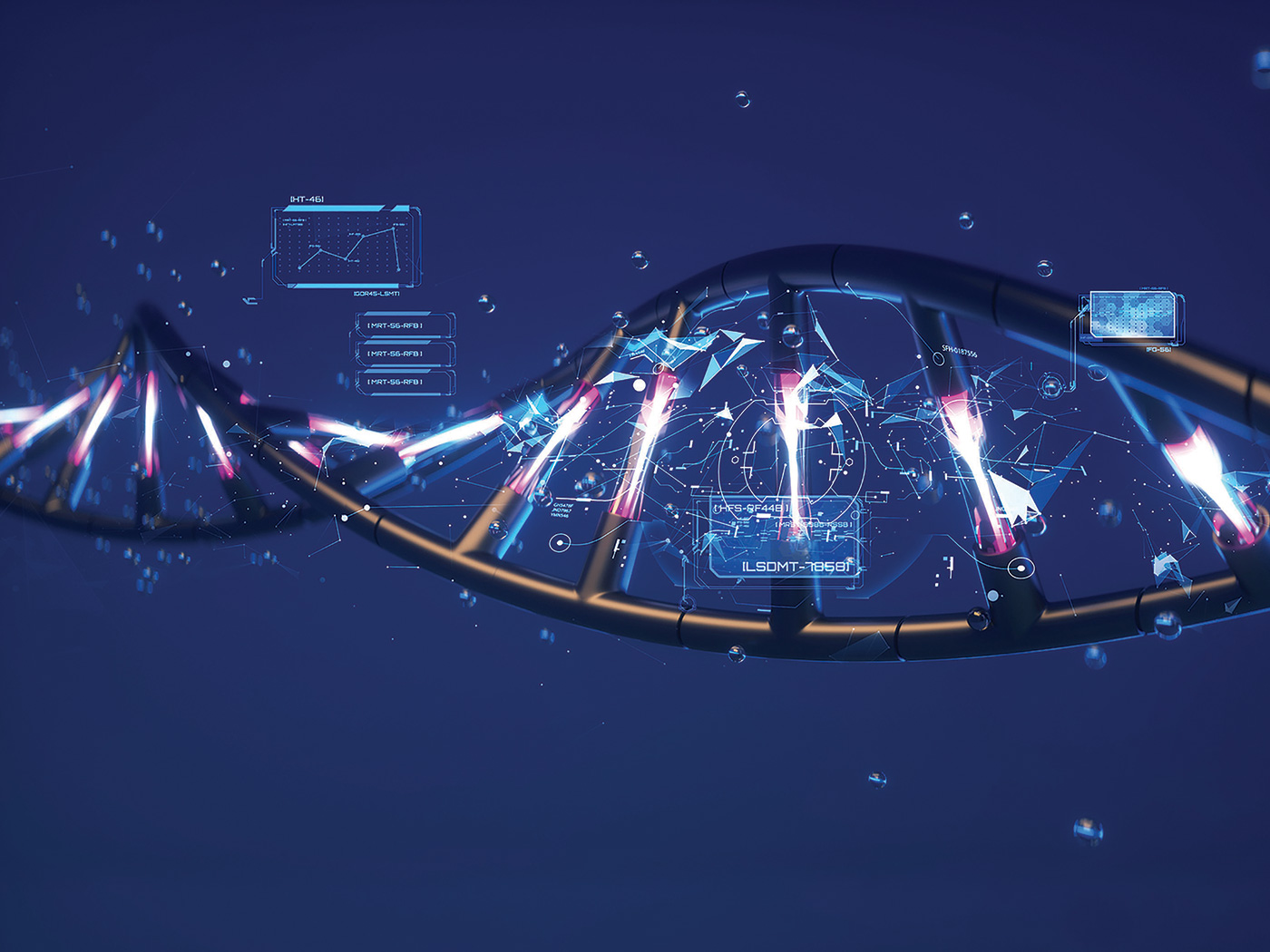 What grabs our attention when we watch living creatures? Action! We lock on to their active responses. Or, as techno-lovers would say, “their outputs.” But without detectors, or “inputs,” there would be no response. As we saw in last month’s article, a sensor acts as a principal triggering device for an organism’s self-adjusting systems.1 If we see sensors as units of an army, they are the front-line soldiers. They’re where the action is, and they merit more attention and research.
What grabs our attention when we watch living creatures? Action! We lock on to their active responses. Or, as techno-lovers would say, “their outputs.” But without detectors, or “inputs,” there would be no response. As we saw in last month’s article, a sensor acts as a principal triggering device for an organism’s self-adjusting systems.1 If we see sensors as units of an army, they are the front-line soldiers. They’re where the action is, and they merit more attention and research.
Sensors trigger life-saving processes not only in human-engineered devices but also within living creatures. ![]()
Sensors trigger life-saving processes not only in human-engineered devices but also within living creatures. This Engineered Adaptability series of articles focuses on how creatures seem to continuously track environmental changes using the same key elements man-made tracking systems use—sensors, logic algorithms, and response mechanisms. This design-based, organism-focused approach explains adaptability as the outworking of an organism’s incredibly intricate innate systems that enable it to relate to external conditions. These systems integrate with other systems that allow parents to bestow a biological inheritance that may give their offspring a head start in overcoming new challenges posed by specific environmental conditions.
So far, we’ve seen how an organism’s systems and traits 1) specify which conditions will be stimuli, 2) determine the favorability of any condition, 3) define the conditions comprising its niche, and 4) use internal logic to select targeted responses to changed conditions. A distinctive of the continuous environmental tracking (CET) framework is that organisms are viewed as active, problem-solving entities traveling through time, detecting changed conditions, solving challenges, and filling new niches. This approach to explaining adaptations is the exact opposite of evolutionary externalism, which thinks active environments mold passive organisms.2
Understanding the engineering design and function of sensors is basic to fitting them into a design-based approach to adaptability. A fundamental question remains—do organisms really use sensors to track changing environmental conditions and initiate appropriate self-adjustments? The answer is yes, in abundance. Let’s explore how some creatures use their sensors to track environmental changes.
Sensors Detect Specific Conditions and Guide Navigation
North American monarch butterflies (Danaus plexippus) stay on a general southwesterly course on their 2,400-mile trip each fall from Canada or the northern U.S. to their overwintering sites in Mexico. They navigate using the sun, a process that begins with their eyes gathering data on the sun’s horizontal position. But the sun changes position throughout the day. Wouldn’t following a moving target lead the butterflies off course?
If human engineers were hired to design a monarch that uses the sun for navigation, their studies would notice that the sun’s rate of motion is constant. Therefore, the engineers would likely design the butterfly with an internal clock integrated with a type of algorithm to recalibrate flight per the sun’s movement so it could stay on course. Research has, in fact, discovered that monarchs do have time-compensation clocks housed in their antennae. Recent investigators have made progress in producing a model to decipher how the monarchs’ nervous system might integrate neuronal oscillation sensory inputs from their eyes tracking the sun’s horizontal position and their circadian clocks to direct flight (Figure 1).3
Every insect seems to contain a storehouse of technological marvels that can outperform the best elements of human-designed tracking systems—including the common vinegar fly Drosophila. Since these insects are small and have low heat content, they risk death from dehydration if they cannot quickly locate a habitat with the water vapor concentration matching their needs. The outdoor humidity preference for Drosophila is species-specific. ‘‘Desert’’ flies prefer about a 20% relative humidity environment, while ‘‘rainforest’’ flies favor a humidity of around 85%.
Most insects seem to possess humidity detectors that enable them to navigate to favorable humidity ranges. Anders Enjin and his colleagues were the first to describe genes and neurons necessary for hygrosensation in Drosophila.4 At a scale far smaller than the best human-engineered humidity sensors, the fly’s microscopic and incredibly precise humidity sensor is composed of three individual neurons that project into distinct glomeruli in the posterior antennal lobe (Figure 2). This intricately calibrated humidity-detecting system flies in the face of evolutionary externalistic expectation.
Sensors Detect Threats and Initiate Body Changes
Numerous studies document how some organisms can detect the presence of predators, respond during embryonic development—or even as adults—with specific trait adjustments, and potentially pass a tendency for the adjusted form to offspring. For instance, two Norwegian scientists conducted experiments to identify elements of the underlying mechanism that causes a rapid and remarkable increase in the body depth and muscle mass of crucian carp, Carassius carassius, in the presence of northern pike, Esox Lucius, a predatory fish that eats carp (Figure 3).5 Additional researchers have more recently quantified that these body size modifications improve the carp’s escape response (a burst swimming movement and turning rate) and hinder pike from swallowing them.6
The Norwegian investigators demonstrated that crucian carp do not respond with growth changes after exposure to northern pike in and of themselves. Nor do they respond to pike that are fed Arctic char, Salvelinus alpinus. Morphological changes occur only after carp are exposed to pike that had been feeding on other crucian carp. They also responded when researchers added the prepared and homogenized skin tissue of crucian carp to their holding tanks. The study authors concluded “that chemical substances from the skin of conspecific fish, expressing primer pheromone effects, are responsible for induction of the phenotypical changes.”5
Not surprisingly, both groups of researchers label the carps’ self-adjustments as “predator-induced.” This characterization is consistent with evolutionists’ externalistic approach to adaptability. But pike fish cannot directly induce the expression of carp genes. So, externalistic characterizations appeal to mystical events.
An approach using objective engineering causality would identify that if some carp had defective pheromone sensors due to mutations, they could be swimming in a lake full of pike feasting on other carp (thereby saturating the water with pheromones) and would not change body shape. Pheromones—i.e., external conditions—are either present or not. The change in body shape is a sensor-induced/triggered self-adjustment. Carp must have a sensor specific to the chemical found in processed carp skin, and internal programming to specify that chemical to be a stimulus, and logic algorithms to specify a targeted response before they can make the self-preserving body size modifications.
Signals to Offspring for Self-Modification of Development
Research has accelerated to discover the effects of potentially increased global temperatures on species in their natural conditions. If engineers were to design organisms with a built-in resilience to dynamic temperatures, they would consider the ability to track and self-adjust to changes to be a principal consideration.
One recent study proceeded on the assumption that guinea pigs have a neurological mechanism to detect temperature changes, though it did not identify a specific sensor.7 This team obtained five male, genetically diverse guinea pigs (Cavia aperea) from Argentina and Uruguay. As a control group, they used a generation of pups from each male mated with two females. Mating took place within natural average outdoor temperatures of 38–67°F (3.4–19.5°C).
Prior to the next mating, the males were kept in cages resting on heating plates that kept the floor at 86°F (30°C) for 60 days, which is about how long it takes for a stem cell to develop into a mature sperm cell (one cycle of spermatogenesis). A subsequent generation of pups was obtained from the males mating with the same females that produced the control pups (Figure 4).
The researchers compared changes to molecular (epigenetic) markers placed on specific regions of DNA—but without changing the DNA sequence itself—in liver and testis tissue between the control and post-heat-treatment pups and the sires. The results disclosed epigenetic changes to 13 of 19 genes and in the promoter region of 12 additional genes known to be associated with physiological temperature regulation. The researchers concluded that “immediate and inherited paternal epigenetic response with a potential adaptation reaction that occurred in response to increased ambient temperature” may even be transmitted to the second generation.7 This was the first experiment documenting an epigenetic response in mammals to temperature change, though the investigators noted that similar responses have been observed in plants, corals, fruit flies, chicken, and fish.
Sensors Are the Triggers for Self-Adjusting Systems
The tight organism-environment relationship does not happen by chance. Not only can engineering principles explain this relationship, there is evidence they are the only non-mystical principles capable of explaining it. Why? In order for two autonomous entities to work together, even living ones, design analysis shows they each must be controlled by incredibly complicated innate systems working for that purpose.
Sensors play a key role in a design-based, organism-focused framework of adaptability like continuous environmental tracking—even if many researchers do not bother to look for them. ![]()
Obviously, sensors play a key role in a design-based, organism-focused framework of adaptability like continuous environmental tracking—even if many researchers do not bother to look for them. The CET framework predicts that sensors are crucial for adaptable systems, and therefore exploration efforts should be made to identify them. Sensors are the triggers for the internal systems that empower organisms to be active, problem-solving entities. Instead of being passive objects molded by the environment, living creatures actively detect changed conditions, solve challenges, and fill new niches within their lifetime and pass the adapted traits to their offspring. And it all begins with sensors.
Click here for other articles in the Engineered Adaptability series.
References
- Guliuzza, R. J. 2018. Engineered Adaptability: Sensor Triggers Affirm Intelligently Designed Internalism. Acts & Facts. 47 (2): 17-19.
- Guliuzza, R. J. 2017. Engineered Adaptability: Adaptability via Nature or Design? What Evolutionists Say. Acts & Facts. 46 (9): 17-19.
- Shlizerman, E. et al. 2016. Neural Integration Underlying a Time-Compensated Sun Compass in the Migratory Monarch Butterfly. Cell Reports. 15 (4): 683-691.
- Enjin, A. et al. 2016. Humidity Sensing in Drosophila. Current Biology. 26 (10): 1352-1358.
- Stabell, O. B. and M. S. Lwin. 1997. Predator-induced phenotypic changes in crucian carp are caused by chemical signals for conspecifics. Environmental Biology of Fishes. 49 (1): 139-144.
- Domenici, P. et al. 2008. Predator-induced morphology enhances escape locomotion in crucian carp. Proceedings of the Royal Society B. 275 (1631): 195-201.
- Weyrich, A. et al. 2016. Paternal intergenerational epigenetic response to heat exposure in male Wild guinea pigs. Molecular Ecology. 25 (8): 1729-1740.
* Dr. Guliuzza is ICR’s National Representative. He earned his M.D. from the University of Minnesota, his Master of Public Health from Harvard University, and served in the U.S. Air Force as 28th Bomb Wing Flight Surgeon and Chief of Aerospace Medicine. Dr. Guliuzza is also a registered Professional Engineer.







